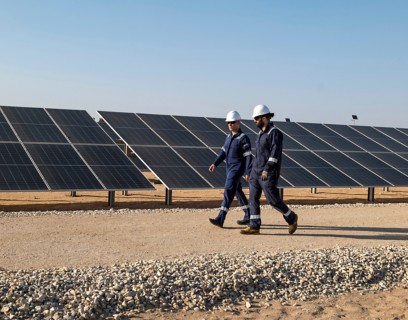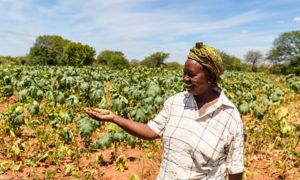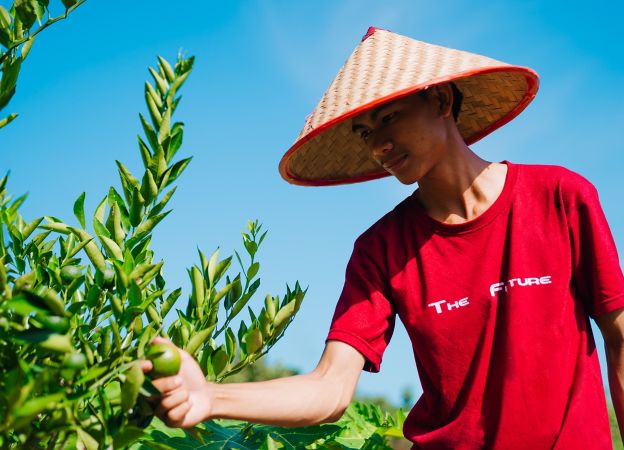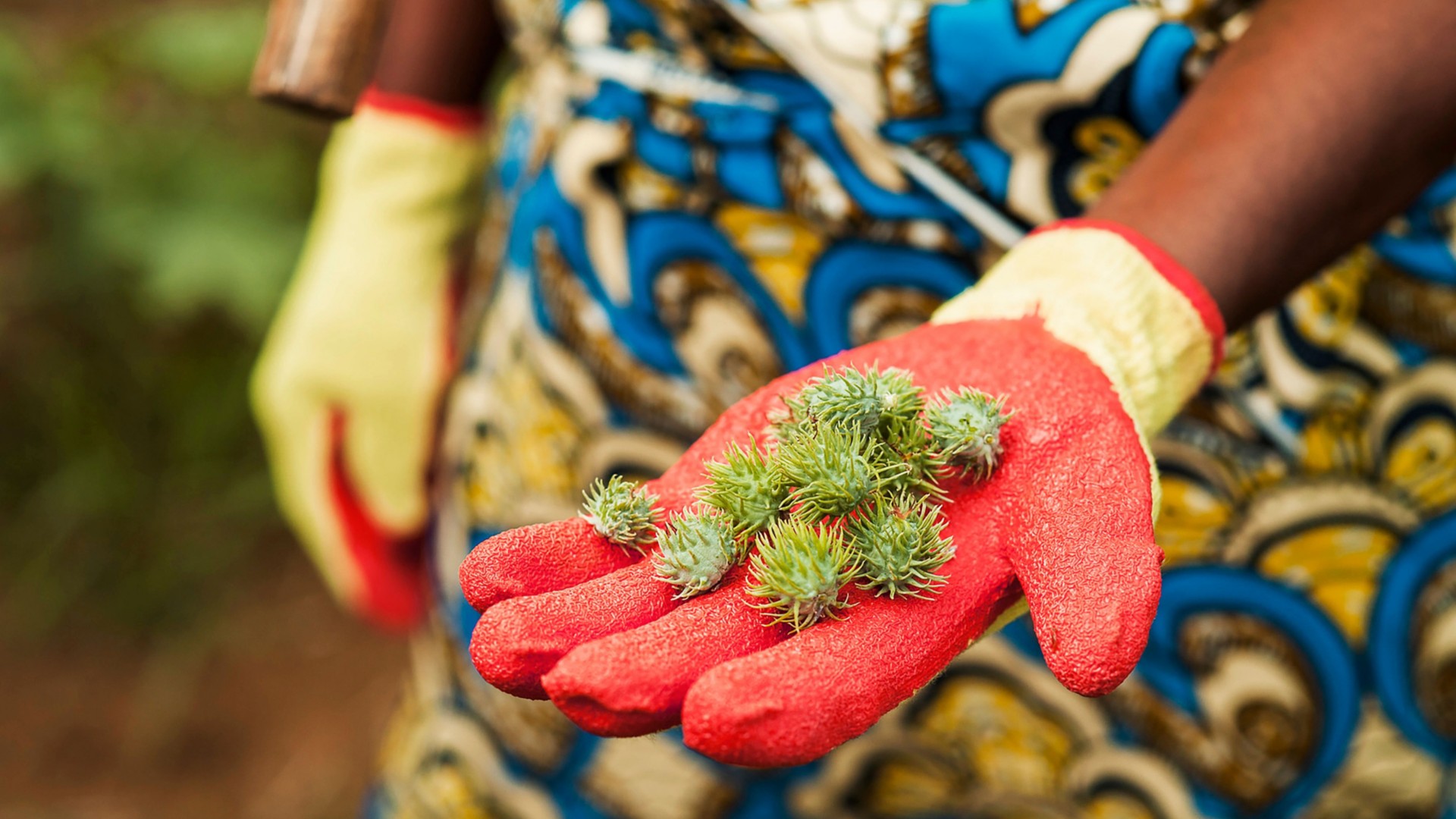
Biogas and biofuels production
We are present in the bioenergy sector with investments in the production of biofuels and biomethane, which is increasingly obtained from scrap and waste. Eni produces biofuels from various raw materials. Today our biorefineries are fed mostly by waste raw materials resulting from used cooking oil, animal fat and other biomass, which allows us to produce Hydrotreated Vegetable Oil (HVO) biofuels capable of reducing CO2eq emissions, depending on the feedstock used, by between 60 and 90% (calculated over the entire value chain) compared to the reference fossil mix, pursuant to the "RED" Directive for the promotion of energy from renewable sources. Eni stopped supplying palm oil to its Venice and Gela biorefineries as early as October 2022.
Through Enilive, we manage biorefining operations, the production of biomethane, and all smart mobility solutions such as the Enjoy car sharing service. We also oversee the marketing and distribution of all types of fuel for mobility, also through our Enilive Stations across Europe.
Highlights
Biofuels will be increasingly present in our energy mix thanks to a plan to expand plant capacity.
total biorefining capacity in 2024 (mln ton/y)
(million tonnes/year) total biorefining capacity by 2028
total biorefining capacity by 2030
Enilive Stations across Europe
Enilive Stations in Italy and abroad offering HVOlution
total biorefining capacity in 2024 (mln ton/y)
(million tonnes/year) total biorefining capacity by 2028
total biorefining capacity by 2030
Enilive Stations across Europe
Enilive Stations in Italy and abroad offering HVOlution
From the solutions of our Research Centers, we develop biofuels
With low-carbon production technologies and methods, we produce fuels that contribute to reducing emissions in transport.


Key operating and financial results
Highlights Full Year 2023
daily production hydrocarbon
adjusted operating profit
adjusted net profit
net capital expenditure
net cash flow from operations
leverage (Before lease liabilities ex IFRS 16)
Biofuels for vehicles with diesel engines, aviation, and marine vessels
Our leading biofuel for transport is HVO (Hydrotreated Vegetable Oil), produced from renewable feedstocks, primarily waste and residues, at our biorefineries in Venice and Gela, Italy, and Chalmette, USA, using the EcofiningTM technology. HVO can be used in its pure form in all compatible diesel engines and is sold under the name HVOlution at Enilive service stations. Additionally, HVO is blended at 15% in Eni Diesel+.
Biofuels for maritime transport
We are developing initiatives to support the energy transition and decarbonization of the shipbuilding and maritime sectors through the production and sale of HVO biofuel and other energy fuels, such as hydrogen and “blue” or “green” ammonia derived from biogenic, renewable or waste feedstocks. Since 2023, we have partnered with shipowners’ associations in the initiative “The Route to Net Zero: Together to Decarbonize the Maritime Transport”. This initiative enables compliance with the targets set by the FuelEU Maritime Regulation, the International Maritime Organization (IMO), the Emission Trading System (ETS), and other measures to advance the decarbonization of the sector.
Sustainable aviation fuels (SAF)
To contribute to the decarbonization of air transport, Enilive produces and markets Sustainable Aviation Fuels (SAFs). In this sector, Enilive has made agreements with ITA, DHL, Kenya Airways and Ryanair.
SAF Enilive: the biojet fuel for a more sustainable aviation
Produced from renewable raw materials, our biofuel contributes to accelerating the energy transition in the sector.

The agri-business embodies Eni's approach to an energy transition with a strong innovative component, combined with a strong focus on the social dimension.
Claudio Descalzi
Chief Executive Officer of Eni

Agri-hubs in the projects launched in Africa
To ensure an increasingly sustainable supply for our biorefineries, we have developed a vertical integration model for cultivation and seed pressing projects in various countries for the production of vegetable oils (agrifeedstock), with the aim of reaching over 700,000 tonnes by 2027, corresponding to more than 35% of the feedstock processed in Italian biorefineries.
Through an agri-feedstock project: we are coordinating the cultivation of non-food plants on land identified as degraded by the local authorities and promoting the introduction of second-harvest crops, regenerative agriculture projects aimed at competing neither with food production nor with forest resources in some African countries, such as Mozambique. In the same countries, we co-ordinate the collection of waste materials, which are useful for producing biofuel, from agriculture, livestock breeding and the agri-food, catering and tourism industry. The products are collected in a network of "agri-hubs" and are then processed in our biorefineries and contribute to the production of HVO biofuels, initially with a limited role but then increasingly important.
In addition to cultivation, each of these projects envisages the creation of a centre for pressing crops and producing oil, as well as activating a series of services for farmers such as access to mechanisation, the distribution of seeds and fertilisers, training and technical assistance. The model provides that processing by-products are also exploited and transformed into feed for livestock or fertilisers for soil, contributing to the improvement of agricultural production for the domestic market. The regeneration of land thanks to the cultivation of biomass also contributes to the socio-economic development of the area. Farmers are actually fully in charge of the agricultural production at the agri-hubs. Through this model, we ensure that farmers can bring their products into the market without compromising land access.
Highlights
The main goals we want to achieve through agri-hubs in Africa.
target for produced agrifeedstock by 2027 in different countries
to benefit from agri-hubs in Kenya by 2030
target for produced agrifeedstock by 2027 in different countries
to benefit from agri-hubs in Kenya by 2030
In Kenya, agri-hubs for more sustainable mobility
A photobook documents the involvement of local farmers in the production of bio-oils, which are used as raw materials for biofuels.

Towards a new energy
Visit the agri-feedstock projects that contribute to the increasingly sustainable supply of our biorefineries.
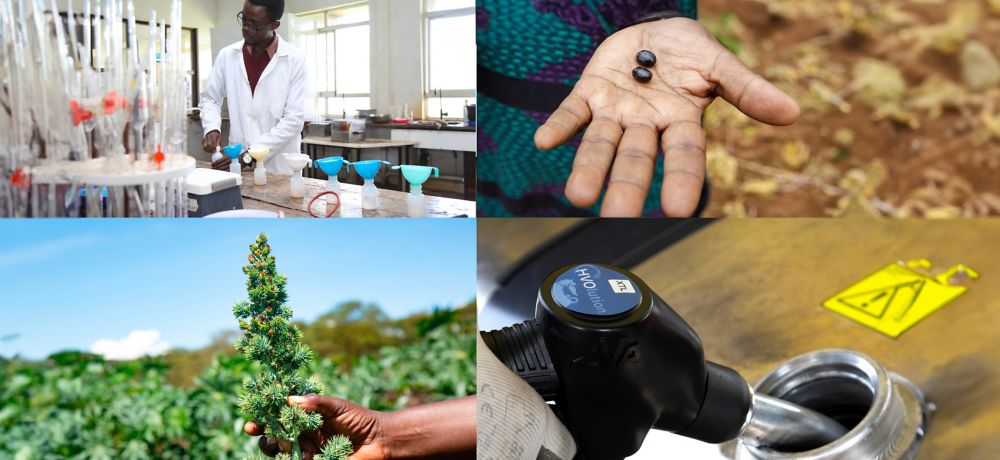
The countries which we are expanding our global portfolio with
New technologies for agri-hubs thanks to collaborations with suppliers
We involve our suppliers in the development of new technologies to extract vegetable oil and produce fertiliser and fuel to be then used in agri-hubs.
Biomethane: another way to exploit agricultural waste in a circular perspective
In the bioenergy sector, we are also active in the production of biomethane through the company Enibioch4in. Due to it also being obtained from organic, agricultural and livestock waste according to the principles of the circular economy, this fuel can be used to produce electricity from renewable sources, distributed for domestic heating or used as fuel for transport, helping to expand our range of solutions for more sustainable mobility.
Highlights
Our biomethane plants and objectives.
installations for generating electricity from biomethane
waste treatment plant
biomethane we aim to feed into the grid
installations for generating electricity from biomethane
waste treatment plant
biomethane we aim to feed into the grid










